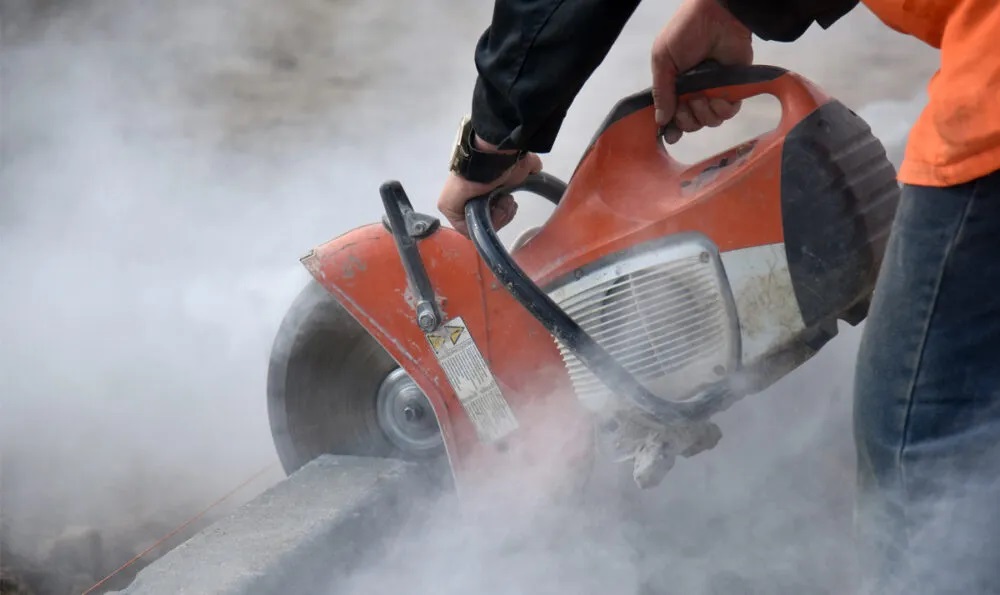Silica dust particles pose serious health risks to workers and the general public, but with the right BossTek control measures, this can be avoided. Construction dust comprises various materials, such as concrete, wood, drywall, silica, asbestos, and metals. Typical construction dust includes silica dust, which is produced while working with silica-containing materials such as concrete and sandstone. Construction sites also generate a significant amount of wood dust. Wood dust can be created when working with either softwood or hardwood. Manufactured goods like fiberboard and plywood also contribute to the wood dust problem. Less harmful materials like gypsum, marble, limestone, and dolomite can also produce dust.
This blog post dives into the dangers of exposure to construction dust and tips you can use to implement dust control measures.
Demolition dust: the risk of toxic dust
Workers can be exposed to dust even if they are not actively building something. In fact, it can be exceedingly risky to manage dust at demolition sites because of substances that have been identified as harmful since the property was built. The EPA warns that lead dust created during the demolition of a house with lead-based paint can pose a threat to local residents’ health. Demolition workers can track dust into their homes and neighborhoods, exposing others to harmful particles. It’s crucial that workers limit their exposure to lead dust. Lead-safe work procedures involve keeping dust inside the work site and employing strategies that reduce dust generation. It’s also crucial to thoroughly clean up the wreckage left behind after the demolition.
Tips for Reducing Dust on Construction Sites
Implement wet dust control solutions
Fortunately, this problem is manageable. But effort and persistence are required. To protect workers, businesses can use wet dust suppression methods, which involve applying water directly to the source of the dust. When water is applied at the contact point, the result is a sludge that can be contained more easily than airborne dust. Due to its low cost and simple implementation, this method is often chosen for dust control. Another alternative is to apply local exhaust ventilation in the area where dust is generated. This eliminates dust in the air before it travels into the room. This technique essentially employs a standard vacuum that has been adapted for commercial and industrial applications. This technique is typically used to contain wood dust, but it has other applications as well.
Provide air-filtering respirators
Additionally, construction sites can benefit from the use of air-filtering respirators. These masks are used in conjunction with other techniques, such as wet collection or suction, to further protect the worker’s respiratory system. The fit of a dust mask is critical for its protective effectiveness. It should fit snugly but comfortably, such that the only air entering the mouth is through the mask’s openings. To guarantee healthy breathing, however, these masks need to be replaced on a frequent basis, and they have a limited lifespan. A respirator can also be utilized, although these are often reserved for dealing with gaseous or vaporous substances rather than dust.
Regulatory measures
The Environmental Protection Agency (EPA) addresses a number of concerns raised about construction site dust. Despite the fact that the EPA is a federal agency, local and state governments typically regulate and monitor dust from construction sites. These rules can be laws adopted at the state or county level, as well as those enacted by city councils and even the mayors of cities. Governments and construction industry stakeholders must work together to establish and enforce stringent regulations regarding dust control. Regular inspections and monitoring can help ensure compliance and protect workers and the public from the hazards of construction dust.
Construction dust might be an inconspicuous danger, but its health implications are significant and far-reaching. By understanding the risks and implementing preventive measures, you can protect the health and well-being of construction workers and the surrounding communities.


